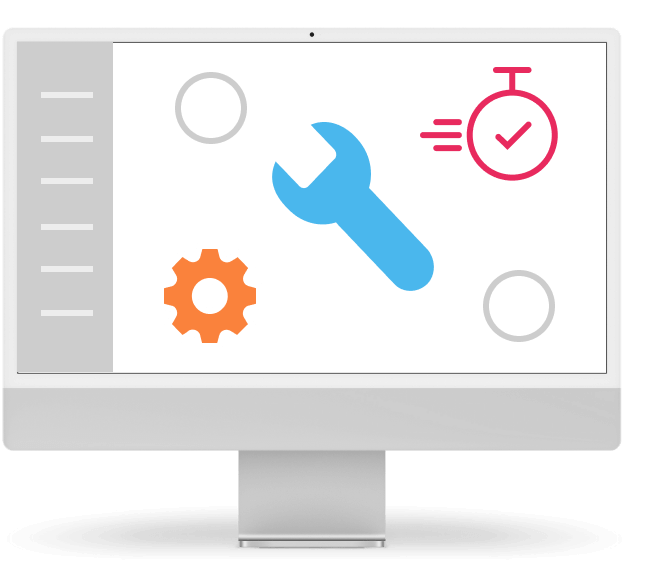What to look for and what to avoid when choosing… type of infrastructure
The recent AWS outage has shaken everyone again. The incident highlighted problems with business infrastructure.
These problems are the global dependence on 3 public cloud providers. Companies have therefore been forced to rethink their approach to internal IT.
When a company decides on a new type of infrastructure – either starting, changing or renewing – it should go much deeper than just the nice name of the provider. The impact on costs, flexibility, security, innovation and legal liability should also influence the decision.
These categories are not as attractive as making decisions based on feelings, but in the long run it is the only way to ensure as few problems as possible with the functioning of business IT.
Although it is a technical choice, the reasons behind it are often not technical. At least not for the most part. Business, company strategy and regulation intervene in the selection.
So how do you structure the selection process so that you end up with the right solution? How to navigate today’s offer and what to actually take into account? We will look at that in today’s article.
The type of infrastructure is not the real reason
To correctly choose a specific type of infrastructure, you must first find out what the selection criteria are for you. For some companies, these are technologies that technicians are used to. Then it is necessary to build a tender process around them.
For some companies, minimum costs are important, for others, maximum security. You understand the drill. First, you need to decide what aspects the infrastructure should meet.
But don’t be fooled by the “clear choice” at first glance. Let’s take a specific example: your company is used to using Windows servers. Logically, it should therefore reach for Microsoft services.
But such a choice could be based on a fallacy. A Windows server is not dependent on Microsoft’s operation. You can deploy it on physical infrastructure, purchase it from another cloud provider or integrate it into a hybrid or multicloud scenario.
In addition to clearly defined criteria, you also need a list of options that reflect the state of the market.
Let’s say you operate in a regulated environment that requires you to keep certain data on-premise. But that doesn’t mean you have to keep all your data on-premise.
By choosing a hybrid cloud, you can achieve an environment that meets regulatory requirements while minimizing costs by allowing you to store and process non-regulated data in the cloud.
Planning and needs analysis
Now that we have clear selection criteria and the options the market offers, we need to find out which of these options best suits our needs. However, this does not only include the current state, but also plans for strategic development.
This includes a time horizon of three to five years and an overview of users, data and systems. Simply put, all the requirements that the infrastructure will have to be prepared for or have the ability to adapt to.
If we look at a specific example again, a company may currently have all its operations in the public cloud of one provider. However, thanks to the analysis, it finds that some groups of data or activities would be more suitable to transfer to the environment of another provider. In the mid-long term, it will therefore plan to migrate some parts of the IT environment to another public cloud and others to a virtual data center.
AI projects require special attention. They have specific requirements for computing power, input and output speed or the type of architecture on which they run. However, there is a difference between whether AI will be just an auxiliary tool, will be incorporated into the functioning of the company or will be part of products and services. All of this will change infrastructure requirements.
Strategic and regulatory factors
However, external factors also play a role in the needs analysis. Regulations are probably the first thing that comes to mind. Legal regulations set the conditions for all companies at a general level, as well as for specific industries. However, legislation does not only apply to working with data. For example, the European AI Act regulates the use and provision of artificial intelligence.
A less noticeable criterion is control. Terms such as digital sovereignty or data sovereignty are increasingly appearing. A company must compare the extent to which it is willing to give up control over its own environment and data in exchange for a service.
One specific example. We need to deploy CRM. However, as a company, we do not have technicians to take care of the infrastructure for us. So we will use SaaS offers. We do not have to hire technicians to join the team and we have the application we wanted. However, what we exchanged for that was the ability to have control over the environment in which the application runs, as well as some settings of the software itself. In addition, the data is stored on the provider’s servers.
This beam balancing is becoming particularly challenging in the EU as legislative requirements increase. On the one hand, you have to assess what you are willing to exchange for a particular service, but all this in the context of the demands that the law places on you.
Safety and responsibility
Compliance is the one side of the coin. On the other hand, your own security and accountability requirements are looking at you. Here, it is necessary to focus mainly on the level of responsibility you want to bear for security management.
With an on-premise solution, everything lies on your shoulders, with the cloud, you share responsibility with your provider. These options are again reflected in costs, but also in the willingness to give up control over the management of the environment.
As you can see, all the criteria we are talking about are closely related and in fact it is always a matter of balancing out costs, level of control and needs.
Operating models and costs
Of course, you still have to fit all your needs and requirements into your budget. But be careful about how you divide it. Some infrastructure seems like a great deal. But a second look tells you otherwise.
Just because a certain type of infrastructure requires CAPEX doesn’t mean it’s automatically a bad choice. If we take the example of a global public cloud, you don’t have to invest a single penny, but you still have to budget for data transfers.
In general, you’ll be faced with decisions that will involve capital costs, operating costs, technology costs, data transfer fees, or licenses. Each of these items can be assigned to a type of infrastructure and then creates a combination of costs that you can expect for such infrastructure.
Availability and operational reliability
And we continue with the next piece of the puzzle. The company’s ability to withstand an outage should also be a factor in the decision-making process. Every company should already know how much time and data it can lose in the event of an outage without crippling operations. This data then needs to be put into the context of the measures you can invest in.
Let’s look at a specific example again. The company cannot afford to operate on its own hardware. So it goes to an external cloud and pays for HA (high availability). However, this is not a measure against the outage of the given provider. It knows that it needs to be up and running within an hour and that it is impossible to lose any data (it produces it approximately once every half hour).
According to these needs, it sets up backups so that the backup always reflects the state when it was fully operational. Disaster recovery is then provided in another cloud and the processes are set up so that the entire company is fully functional again 45 minutes after the outage.
Again, finances speak to us here, but also the operational characteristics of the individual company. In addition, it is necessary to remember that there is a difference between when I have all the data available, when the systems are functional, and when the entire company is fully operational.
Future development and flexibility
Finally, you need to put all the areas we’ve discussed into the context of your strategic direction and growth potential. You can choose the best option for the current situation, but if it doesn’t respect the future, it will really mess you up over time.
There are many options for preparing for the future – virtualization, containers, infrastructure as code, functions as a service, IaaS, open-source, etc. But the choice depends on the strategy your company is pursuing, not on the technologies themselves.
Typical errors
In addition to ignoring the areas we have already mentioned in this article, companies fall into several other traps when choosing their IT infrastructure.
Some companies have a very narrow view of the future. They focus only on their own direction, without taking into account developments in the markets and the field of technology. This lack of context then leads to the fact that even the best planned infrastructure does not correspond to the options that are most effective for the company. A vivid reminder of this is the rapid development of artificial intelligence and its even faster adoption into the everyday lives of people and organizations.
When we look at the mistake related to costs, we are once again reminded of an idea that is constantly being heard, but companies are constantly ignoring it. Infrastructure costs are much more complex than they seem at first glance. It is important to compare alternatives, especially those that exist on the open-source and proprietary levels. Why not save on licenses?
And then, of course, there is the problem of ignoring negative scenarios. Whether it’s outages, bugs, lack of people, or the need to migrate, for some reason organizations still think it won’t happen to them. And then Azure goes down. And then AWS goes down. It’s perfectly fine, in fact, that when a company chooses infrastructure, it should consider how it will potentially exit and how it will be maintained if things go wrong. You’re willing to pay for insurance. So why not insure the heart and brain of your business?
Conclusion
All these areas are probably making your head spin. But choosing the infrastructure is not that difficult. Actually, you just have to answer these questions:
What? Where? How? Why?
We will help you find the answers, we havethe experience.





